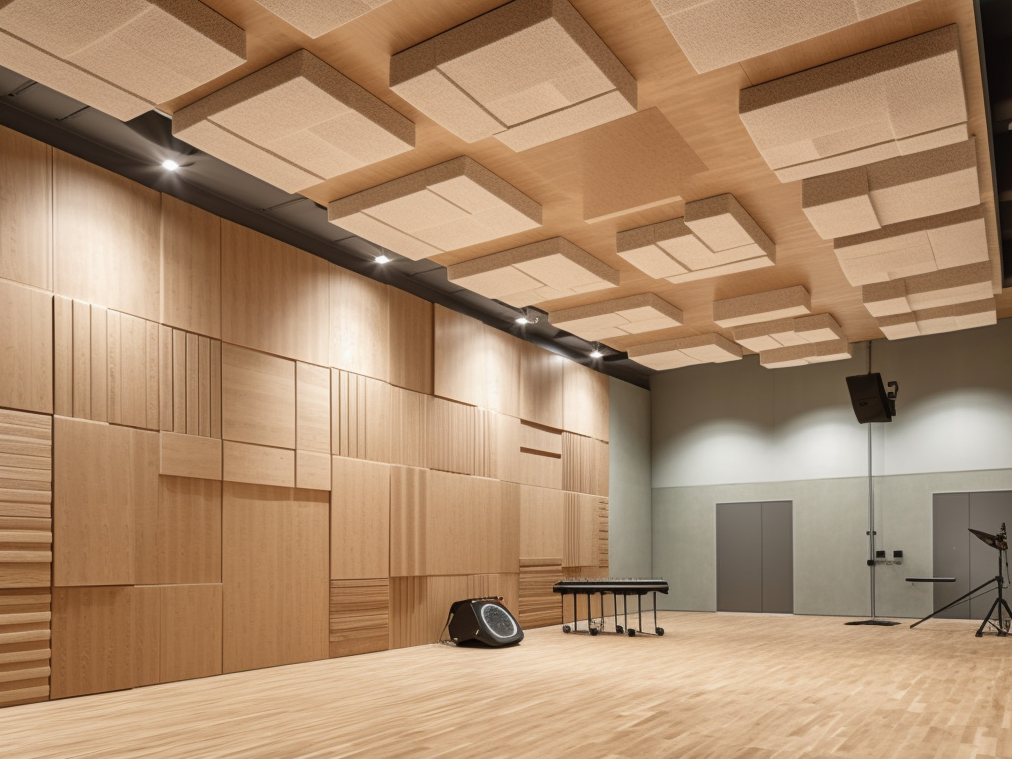
Achieving a properly balanced room with ideal acoustic levels is crucial for the productivity and comfort of workers globally.
To treat sound in a room, it's essential to have a grasp of the fundamental acoustics terminology. Just like anything else, a solid foundation is vital for better acoustic performance.
This guide covers the following topics:
1. Definition of sound, including frequency, decibels, and reverberation time
2. Building acoustics vs. room acoustics
3. Principles for excellent acoustics, including absorption, attenuation, and diffusion.
1. Sound Defined
— Frequency: How sound waves move
Frequency is calculated as the number of repetitive vibrations per cycle per second and is measured in Hertz. The audible range of sound is between 20 to 20,000 Hz. A higher frequency corresponds to a higher pitch. However, when it comes to space planning, the suggested frequency range is between 100 Hz to 5000 Hz.
High-pitched sounds, such as ringtones and consonants, have a frequency of 2500 to 12000 Hz and a short wavelength.

Mid-range sounds, such as speech, have a frequency of 250 to 2500 Hz and a medium wavelength.

Low-pitched sounds, such as HVAC and vowels, have a frequency of 50 to 250 Hz and a long wavelength.

— Decibel: measuring sound intensity
Decibel is a logarithmic unit that expresses the ratio of sound intensity (loudness) and is used to gauge the level of background noise. The range of sounds humans can hear is from 0 to 140 decibels. The value of decibels has no direct or indirect connection to sound frequency.
For instance, the sound of a clock ticking and the noise of a vacuum cleaner may have the same frequency but different volume levels.
Why is this important? In modern open-plan offices, employees are exposed to excessive noise levels, which can range from 60 to 80 decibels, whereas the recommended background noise level in an office is approximately 45 dB.
Offices that exceed the suggested threshold of noise may impede:
1. Concentration
2. Collaboration
But there are methods to minimize stress by creating several workplace microenvironments that are designed with sound balance in mind, considering the activity and the people who will be using these areas.

— Reverberation time: when the sound fades to silence
Reverberation time refers to the duration for an initial sound source to diminish by 60 dB, expressed in seconds. Achieving exceptional speech intelligibility and clarity involves adjusting and balancing the reverberation time through absorptive materials tailored to specific acoustical challenges in a given space. Factors that always influence the reverberation time include:
1. The size of the room
2. The temperature of the room
3. The materials, objects, and people in the room that absorb sound
The recommended reverberation time varies according to the intended use of the space:
- Office: 0.75s
- Meeting room: 0.60s
- Cafeteria: 1.00s
- Gymnasium: 1.50s
- Auditorium: 1.50 to 2.00s
Why is it important to consider reverberation time? In an office, excessive reverberation can exacerbate existing distracting sounds, as the sound bounces off walls and tables, among other hard surfaces. For example, it can result in difficulties understanding conversations with colleagues or being distracted by people speaking on the other side of large spaces. The solution to dampen reverberation is through the use of sound-absorbing materials.


2. Room acoustics vs Building acoustics
Building acoustics and room acoustics may seem similar, but they require different approaches to resolving issues. Building acoustics concerns the transmission of sound from outside and within a building, such as from outdoor traffic or footsteps from an adjacent floor. This can be addressed by insulation of windows, walls, ceilings, and floors, or by reducing the transmission of sounds from the source. In contrast, room acoustics focuses on sound waves within a room, and the best solution is to use absorption materials to prevent sound waves from reflecting off surfaces and creating echoes.

3. Principles for superior acoustics
Our acoustic solutions are intended to improve the acoustical environment of a room and decrease reverberation time. These solutions adhere to one or more of the following acoustic principles.
— Absorption
When sound waves come into contact with acoustically soft materials, they are absorbed.
Sound is a type of energy, and it is necessary to convert this energy into heat through friction in order to stop it from propagating. The amount and quality of absorption are determined by the absorption coefficient of the product. Absorption treatments can be applied to fixed wall or ceiling elements.
— Attenuation
The reduction of sound transfer within a room.
To decrease sound transfer between various areas, vertical components will be applied to decrease sound energy, either by hanging from the ceiling or being free-standing. These can take the shape of vertical ceiling panels, room dividers, desk screens, and a variety of acoustic necessities. The importance of attenuation or sound dampening in enhancing speech intelligibility and clarity should not be underestimated. A positive acoustic experience that absorbs disruptive noises leads to a quieter atmosphere, promotes focus, and encourages successful collaboration in a lively workspace.
— Diffusion
Sound energy is uniformly spread throughout a given space.
Wavelengths that cannot be absorbed by acoustic treatments will be evenly distributed back into the room, resulting in a more even distribution while maintaining a lively, vibrant sound. Otherwise, the sound will be reflected back in a linear manner, resulting in an unpleasant sound that lingers. Different depths of absorptive materials and 3D shapes can be used to achieve this property.